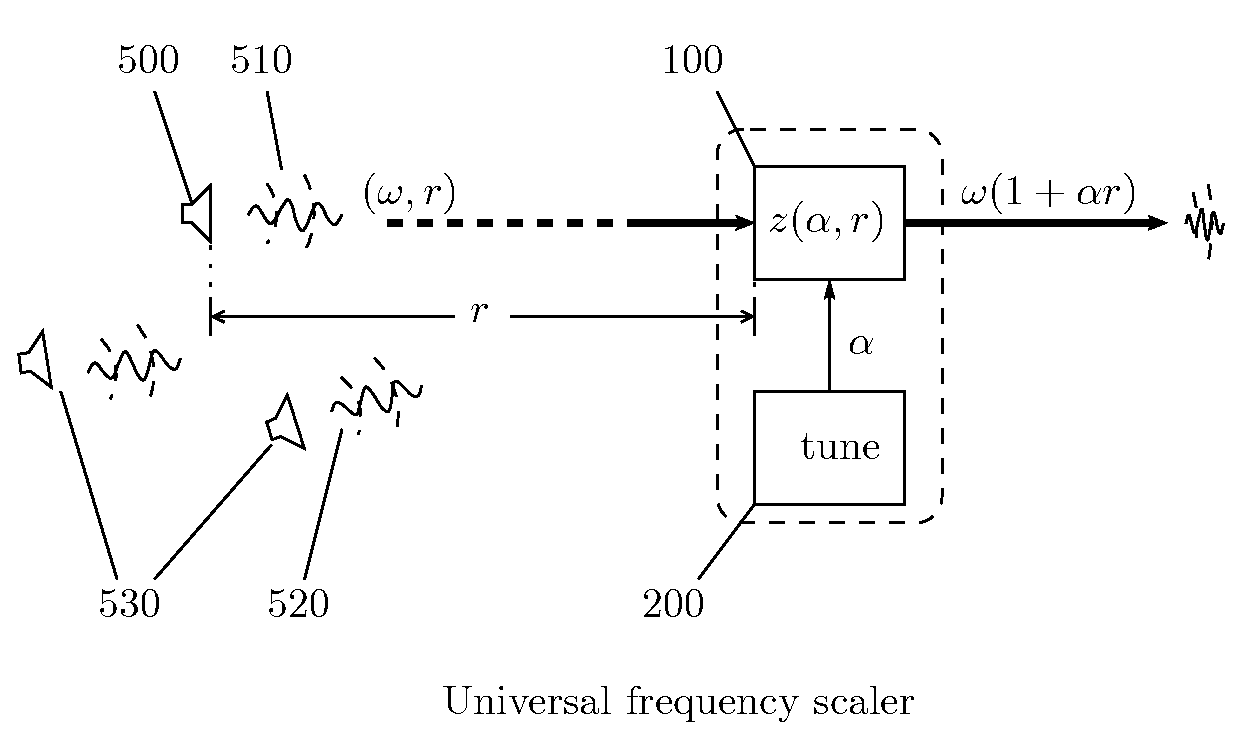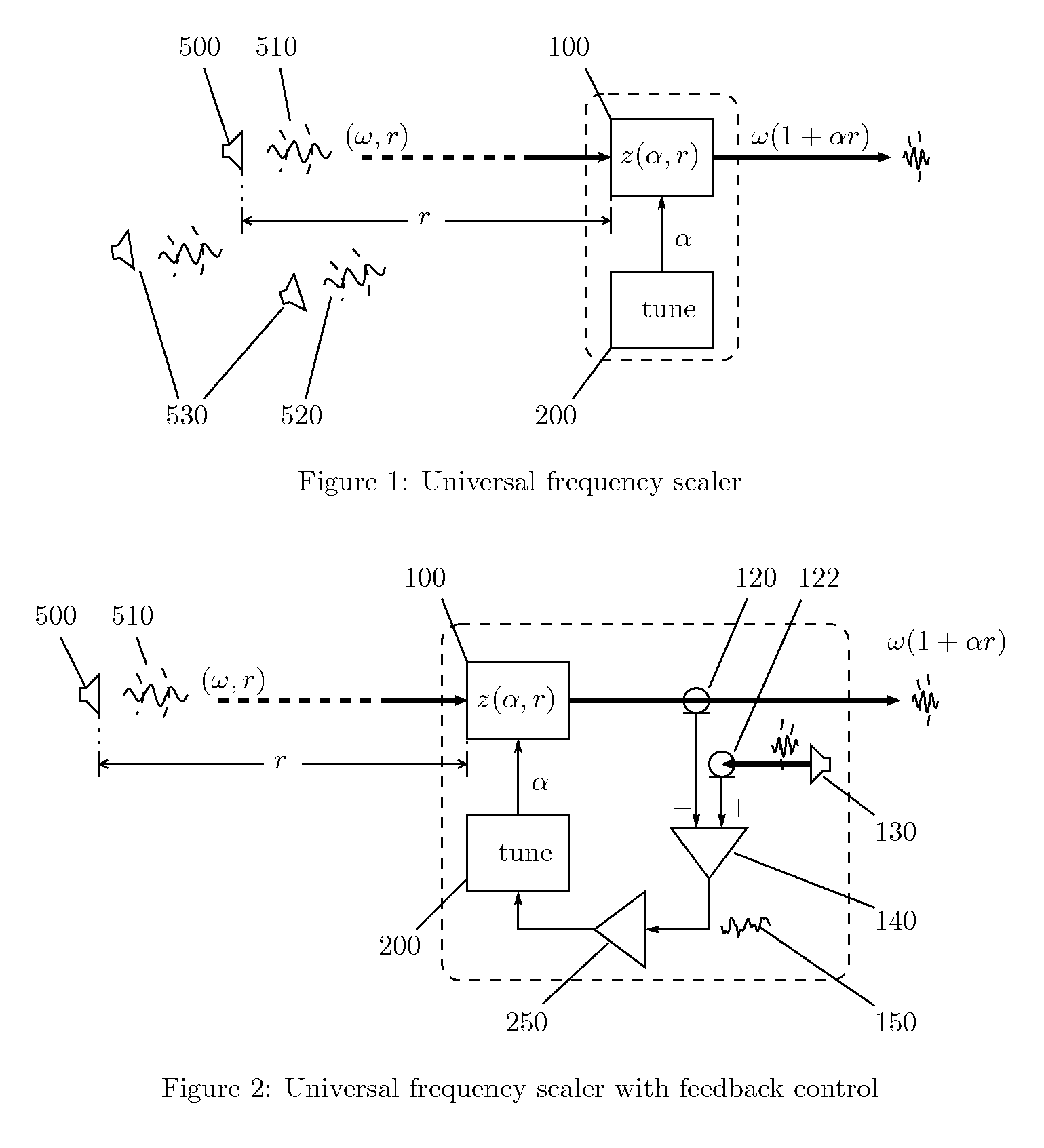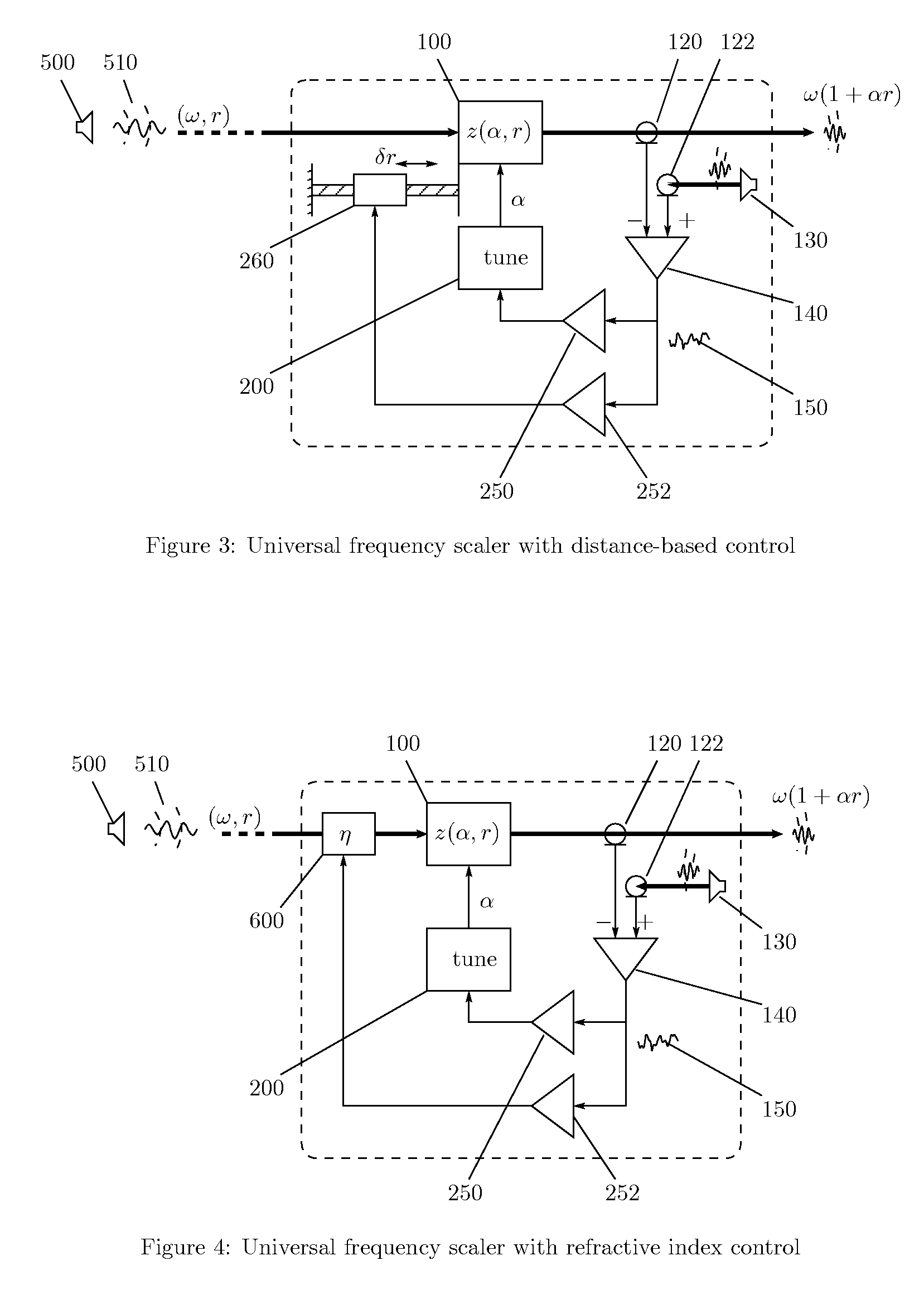Universal frequency generation and scaling
a universal frequency and scaling technology, applied in the field of universal frequency generation and scaling, can solve the problems of increasing technology limitations, unable to transform existing waves, and all such ways are limited to what material properties allow for such purposes, and achieves the effect of smoother output and faster sweep repetition
- Summary
- Abstract
- Description
- Claims
- Application Information
AI Technical Summary
Benefits of technology
Problems solved by technology
Method used
Image
Examples
Embodiment Construction
[0043]The preferred embodiment of the present invention fundamentally comprises, for the principal object of scaling electromagnetic or other waves, a distance-dependent frequency scaling mechanism [100] as described in the first and second copending applications, involving an instantaneous frequency selection {circumflex over (k)} and implementing a continuous normalized rate of change of selection β as defined in equation (1), in combination with a tuning means [200] for setting α≡β / c, as shown in FIG. 1.
[0044]It differs from the copending applications in that the object is the frequency scaling itself, rather than determination of the distance r to a wave source [500] or use of the information of the dependence of the normalized shift z on r for filtering or isolating the wave signal [510] from that source from similar waves [520], possibly overlapping in frequency, time slot, spread-spectrum coding, etc., from other sources [530], as described in the prior applications. As illus...
PUM
 Login to View More
Login to View More Abstract
Description
Claims
Application Information
 Login to View More
Login to View More - R&D
- Intellectual Property
- Life Sciences
- Materials
- Tech Scout
- Unparalleled Data Quality
- Higher Quality Content
- 60% Fewer Hallucinations
Browse by: Latest US Patents, China's latest patents, Technical Efficacy Thesaurus, Application Domain, Technology Topic, Popular Technical Reports.
© 2025 PatSnap. All rights reserved.Legal|Privacy policy|Modern Slavery Act Transparency Statement|Sitemap|About US| Contact US: help@patsnap.com



